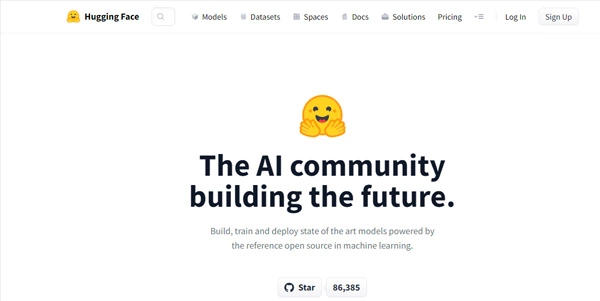Hugging Face has become a go-to area for AI tool developers, researchers, and hobbyists.
It’s an open community to build, train, and share machine learning models, and is full of resources like datasets, APIs, and tools to help AI projects get up and running, as well as manage in the future.
Whether you are into natural language processing (NLP), computer vision (CV), or generative AI models, there is something readily available to use.
What Hugging Face Offers
You will have access to thousands of AI models ready for use. Plug into your application, or fine-tune for your needs. There are datasets from fields as diverse as text, audio, and images.
Developers can quickly fire up an interaction demonstration, called Spaces, that’s easy to display how your model performs.
One of the most popular features on Hugging Face is the Transformers library, where pre-trained models are available for various tasks.
Usability and Integration
The platform is constructed to allow for easy initial setup even for novice AI users. APIs allow for model integration into your own software without extensive coding.
Models can be run in the cloud or on your local setup.
The documentation is easy to follow and the community is active with many users providing insights, snippets and best practices.
You, as a user, can explore models and datasets from the website directly without having to setup anything.
Pricing
Hugging Face has a free plan to start with that provides access to most community models and datasets. The paid plans start at around $9 to be hosted inference, basic usage with a private repository.
For heavier workloads and multiple users, the price will climb with enterprise accounts providing tools for enhanced security, scale and support.
Most the tools will remain free so that even beginners can explore at no cost.
Pros and Cons
A big advantage is the large library of AI models ready for use. The community is active and supportive, which helps you learn faster.
It supports multiple AI frameworks like PyTorch and TensorFlow. On the downside, heavy use of hosted models can become costly.
Some advanced models may also need strong computing resources.
Use Cases
You can build chatbots, sentiment analysis tools, image generators, or speech recognition systems.
Researchers can test new algorithms, and companies can integrate AI into their apps without building from scratch. Teachers and students can also use it as a learning platform.








